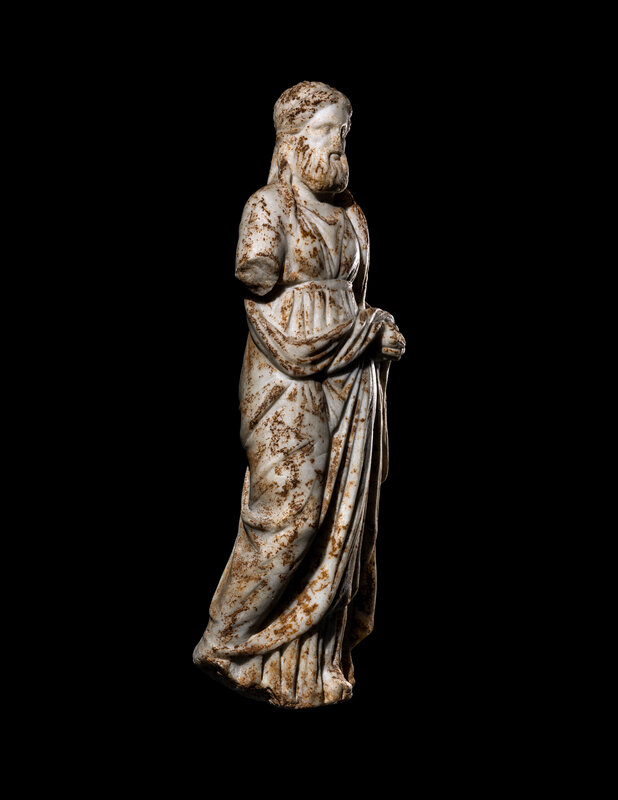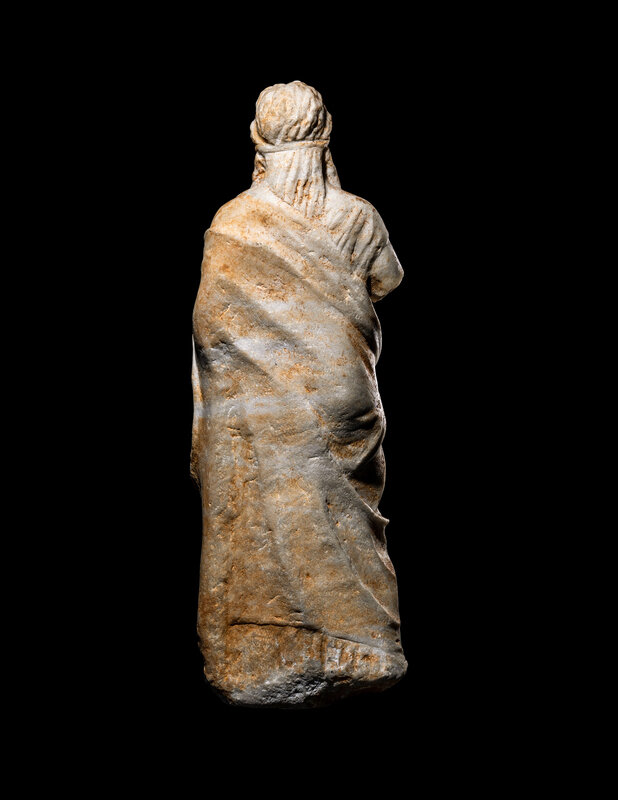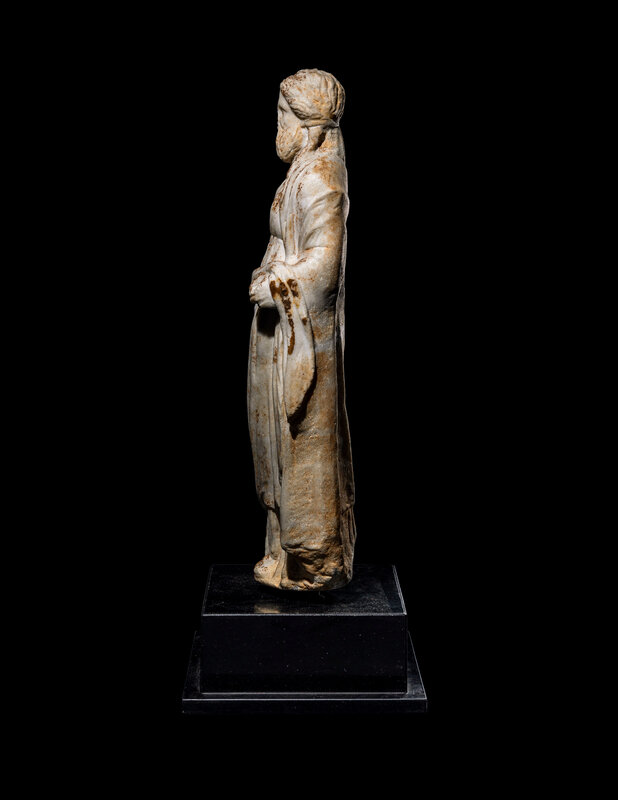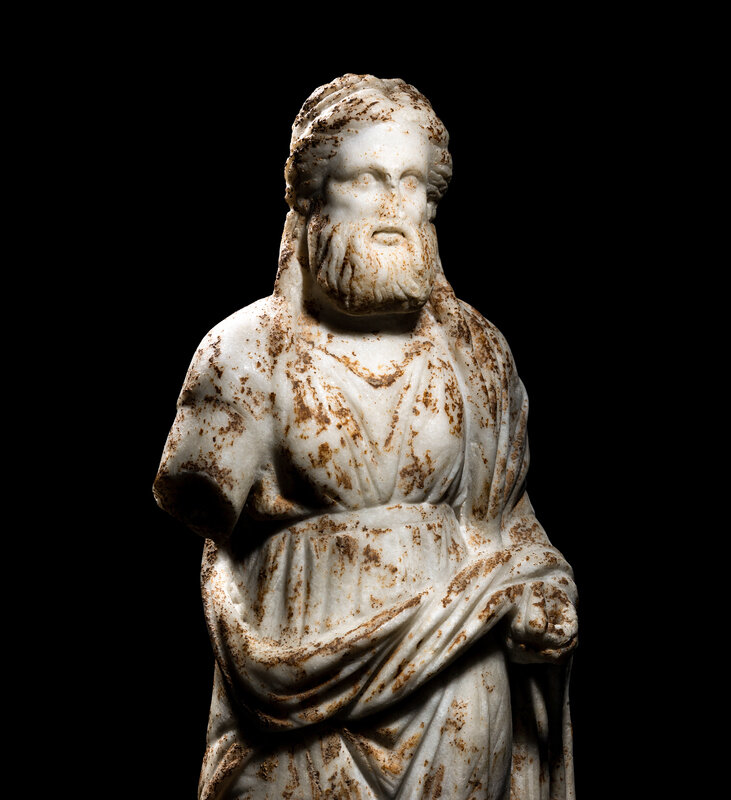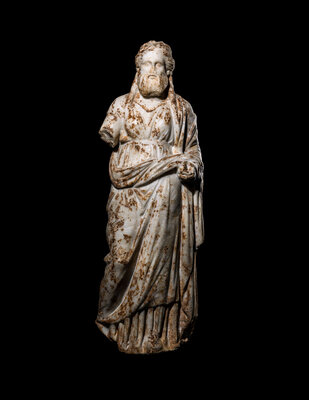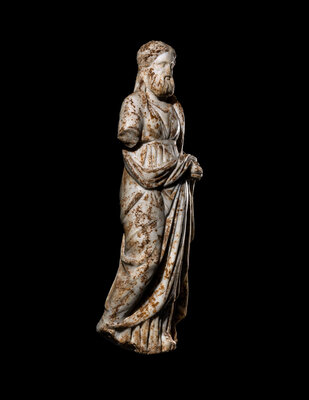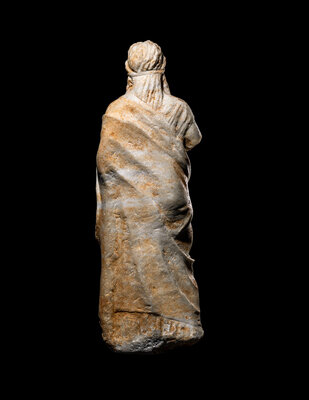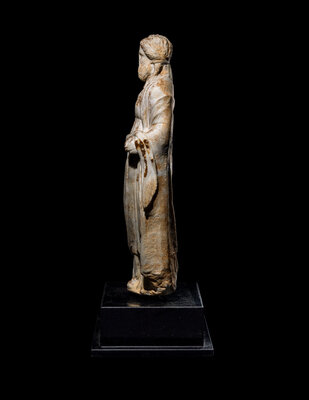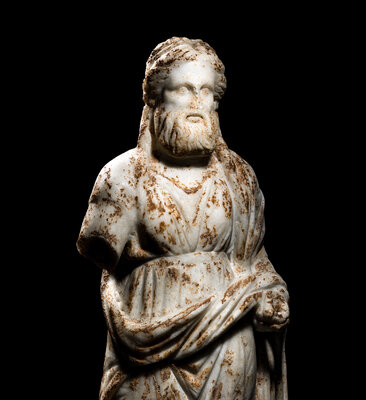Lot 175
A Hellenistic Marble Statue of Dionysus
Sale 1343 - Antiquities and Ancient Art
May 23, 2024
10:00AM CT
Live / Chicago
Own a similar item?
Estimate
$30,000 -
50,000
Price Realized
$20,000
Sold prices are inclusive of Buyer’s Premium
Lot Description
A Hellenistic Marble Statue of Dionysus
Circa 2nd-1st Century B.C.
Height 25 3/4 inches (65.41 cm).
Provenance:
Art Market, France, 1980s. [by repute]
Christie’s, New York, Antiquities, 7 December 2006, Lot 122.
Private Collection, United States.
Christie’s, New York, Antiquities, 3 June 2009, Lot 127.
Private Collection, Dallas, Texas.
Unlike his followers who were easily enthused by wine and his presence, Dionysos remained a perennial observer of the (occasionally debauched) frenzy he inspired. The god’s languid standing posture here falls within this tradition, with movement implied only by a bent right leg beneath the voluminous folds of his mantle. The mantle is draped over the left shoulder to encircle the body and terminates over the left arm, which is bent at the elbow to hold a now missing attribute. The sculptor’s caliber is readily apparent in the textural interplay between the thick overlaying mantle (complete with pressed lateral creases) and the crinkled pleats of the chiton beneath it.
The god’s hair is brushed back from the brow and centrally parted, with long corkscrew curls falling over his shoulders and down the back. The lower half of his face is engulfed by a prodigious beard, bucking the post-Classical trend towards showing Dionysos as a beardless, nude youth, marked by an almost feminine softness. While the tendency towards androgyny that marked most images of Dionysos after the fifth century B.C. is ostensibly flouted here, the garment tells a more complicated story: the finely pleated chiton girt high on his chest was commonly associated with Greek maidens. The drapery falls in v-shaped folds from the neckline, creating an illusion of female breasts that has prompted some scholars to interpret the present statue as a rare ‘hermaphroditic’ presentation of the god.
A more plausible interpretation places this unusual representation within a broader trend in the Greek world of portraying Eastern foreigners as feminine and softened by luxury. High-girt chitons worn by men can be found on Attic pottery since the early 5th century B.C., showing high-spirited scenes during the symposium (all-male drinking parties), during which temporary decadent excesses were permitted and this type of femininization seen as a nod to Dionysos’ Eastern roots. As the last god to join the Olympian pantheon, this wayward son of Zeus was first required to prove himself in the East, winning over India before returning to Mt. Olympus in triumph and his image frequently retained perceived foreign elements. In the present extraordinary statue, Dionysos’ feminine garment celebrates his origin myth while at the same time highlighting the ambiguities of his cult so celebrated in the Hellenistic period.
For a comparable representation, see the Hellenistic seated statue of a bearded and heavily draped Dionysos wearing a chiton in St. Petersburg, Hermitage Museum (18.832): Lexicon Iconographicum Mythologiae Classicae (LIMC) Vol. 3 (Zürich and Munich 1986) under “Dinoysos”, no. 136, illus. (C. Gasparri). For a critical examination of the subject in so-called ‘Anacreontic vases’ see S.D. Price, “Anacreontic Vases Reconsidered” in Greek, Roman and Byzantine Studies: Cambridge, Mass., etc. Vol. 31, Iss. 2, (Summer 1990): 133 – 173.
Condition Report
Contact Information
Auction Specialist

